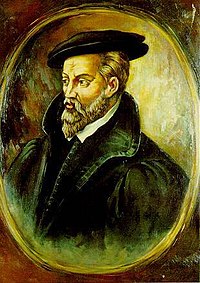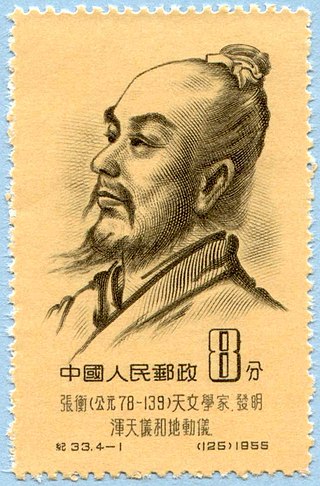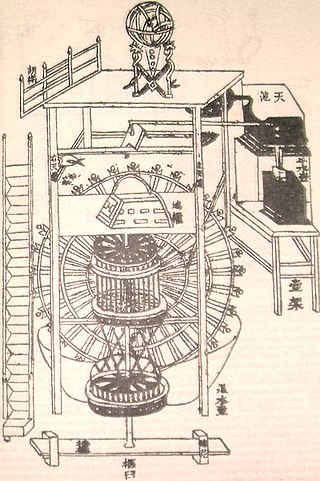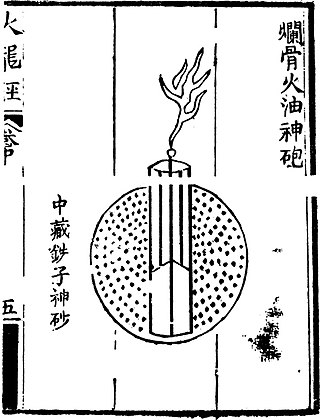Europe and the Middle East

The ancient Greek writers Aristotle (384–322 BC) and Theophrastus (370–285 BC) were the first in the Western tradition to write of minerals and their properties, as well as metaphysical explanations for them. The Greek philosopher Aristotle wrote his Meteorologica , and in it theorized that all the known substances were composed of water, air, earth, and fire, with the properties of dryness, dampness, heat, and cold. [3] The Greek philosopher and botanist Theophrastus wrote his De Mineralibus, which accepted Aristotle's view, and divided minerals into two categories: those affected by heat and those affected by dampness. [3]
The metaphysical emanation and exhalation (anathumiaseis) theory of Aristotle included early speculation on earth sciences including mineralogy. According to his theory, while metals were supposed to be congealed by means of moist exhalation, dry gaseous exhalation (pneumatodestera) was the efficient material cause of minerals found in the Earth's soil. [4] He postulated these ideas by using the examples of moisture on the surface of the earth (a moist vapor 'potentially like water'), while the other was from the earth itself, pertaining to the attributes of hot, dry, smoky, and highly combustible ('potentially like fire'). [4] Aristotle's metaphysical theory from times of antiquity had wide-ranging influence on similar theory found in later medieval Europe, as the historian Berthelot notes:
The theory of exhalations was the point of departure for later ideas on the generation of metals in the earth, which we meet with Proclus, and which reigned throughout the middle ages. [1]

Ancient Greek terminology of minerals has also stuck through the ages with widespread usage in modern times. For example, the Greek word asbestos (meaning 'inextinguishable', or 'unquenchable'), for the unusual mineral known today containing fibrous structure. [5] The ancient historians Strabo (63 BC–19 AD) and Pliny the Elder (23–79 AD) both wrote of asbestos, its qualities, and its origins, with the Hellenistic belief that it was of a type of vegetable. [5] Pliny the Elder listed it as a mineral common in India, while the historian Yu Huan (239–265 AD) of China listed this 'fireproof cloth' as a product of ancient Rome or Arabia (Chinese: Daqin). [5] Although documentation of these minerals in ancient times does not fit the manner of modern scientific classification, there was nonetheless extensive written work on early mineralogy.
Pliny the Elder


For example, Pliny devoted five entire volumes of his work Naturalis Historia (77 AD) to the classification of "earths, metals, stones, and gems". [6] He not only describes many minerals not known to Theophrastus, but discusses their applications and properties. He is the first to correctly recognise the origin of amber for example, as the fossilised remnant of tree resin from the observation of insects trapped in some samples. He laid the basis of crystallography by discussing crystal habit, especially the octahedral shape of diamond. His discussion of mining methods is unrivalled in the ancient world, and includes, for example, an eye-witness account of gold mining in northern Spain, an account which is fully confirmed by modern research.
However, before the more definitive foundational works on mineralogy in the 16th century, the ancients recognized no more than roughly 350 minerals to list and describe. [7]
Jabir and Avicenna
Islamic alchemists advanced the sulfur-mercury theory of metals, a theory that is first found in pseudo-Apollonius of Tyana's Sirr al-khalīqa (The Secret of Creation, c. 750–850) and in the Arabic writings attributed to Jābir ibn Ḥayyān (written c. 850–950). [8] It would remain the basis of all theories of metallic composition until the eighteenth century. [9]
With philosophers such as Proclus, the theory of Neoplatonism also spread to the Islamic world during the Middle Ages, providing a basis for metaphysical ideas on mineralogy in the medieval Middle East as well. The medieval Islamic scientists expanded upon this as well, including the Persian scientist Ibn Sina (ابوعلى سينا/پورسينا) (980-1037 AD), also known as Avicenna, who rejected alchemy and the earlier notion of Greek metaphysics that metallic and other elements could be transformed into one another. [1] However, what was largely accurate of the ancient Greek and medieval metaphysical ideas on mineralogy was the slow chemical change in composition of the Earth's crust. [1]
Georgius Agricola, 'Father of Mineralogy'

In the early 16th century AD, the writings of the German scientist Georg Bauer, pen-name Georgius Agricola (1494-1555 AD), in his Bermannus, sive de re metallica dialogus (1530) is considered to be the official establishment of mineralogy in the modern sense of its study. He wrote the treatise while working as a town physician and making observations in Joachimsthal, which was then a center for mining and metallurgic smelting industries. In 1544, he published his written work De ortu et causis subterraneorum, which is considered to be the foundational work of modern physical geology. In it (much like Ibn Sina) he heavily criticized the theories laid out by the ancient Greeks such as Aristotle. His work on mineralogy and metallurgy continued with the publication of De veteribus et novis metallis in 1546, and culminated in his best known works, the De re metallica of 1556. It was an impressive work outlining applications of mining, refining, and smelting metals, alongside discussions on geology of ore bodies, surveying, mine construction, and ventilation. He praises Pliny the Elder for his pioneering work Naturalis Historia and makes extensive references to his discussion of minerals and mining methods. For the next two centuries this written work remained the authoritative text on mining in Europe.
Agricola had many various theories on mineralogy based on empirical observation, including understanding of the concept of ore channels that were formed by the circulation of ground waters ('succi') in fissures subsequent to the deposition of the surrounding rocks. [10] As will be noted below, the medieval Chinese previously had conceptions of this as well.
For his works, Agricola is posthumously known as the "Father of Mineralogy".
After the foundational work written by Agricola, it is widely agreed by the scientific community that the Gemmarum et Lapidum Historia of Anselmus de Boodt (1550–1632) of Bruges is the first definitive work of modern mineralogy. [7] The German mining chemist J.F. Henckel wrote his Flora Saturnisans of 1760, which was the first treatise in Europe to deal with geobotanical minerals, although the Chinese had mentioned this in earlier treatises of 1421 and 1664. [11] In addition, the Chinese writer Du Wan made clear references to weathering and erosion processes in his Yun Lin Shi Pu of 1133, long before Agricola's work of 1546. [12]













